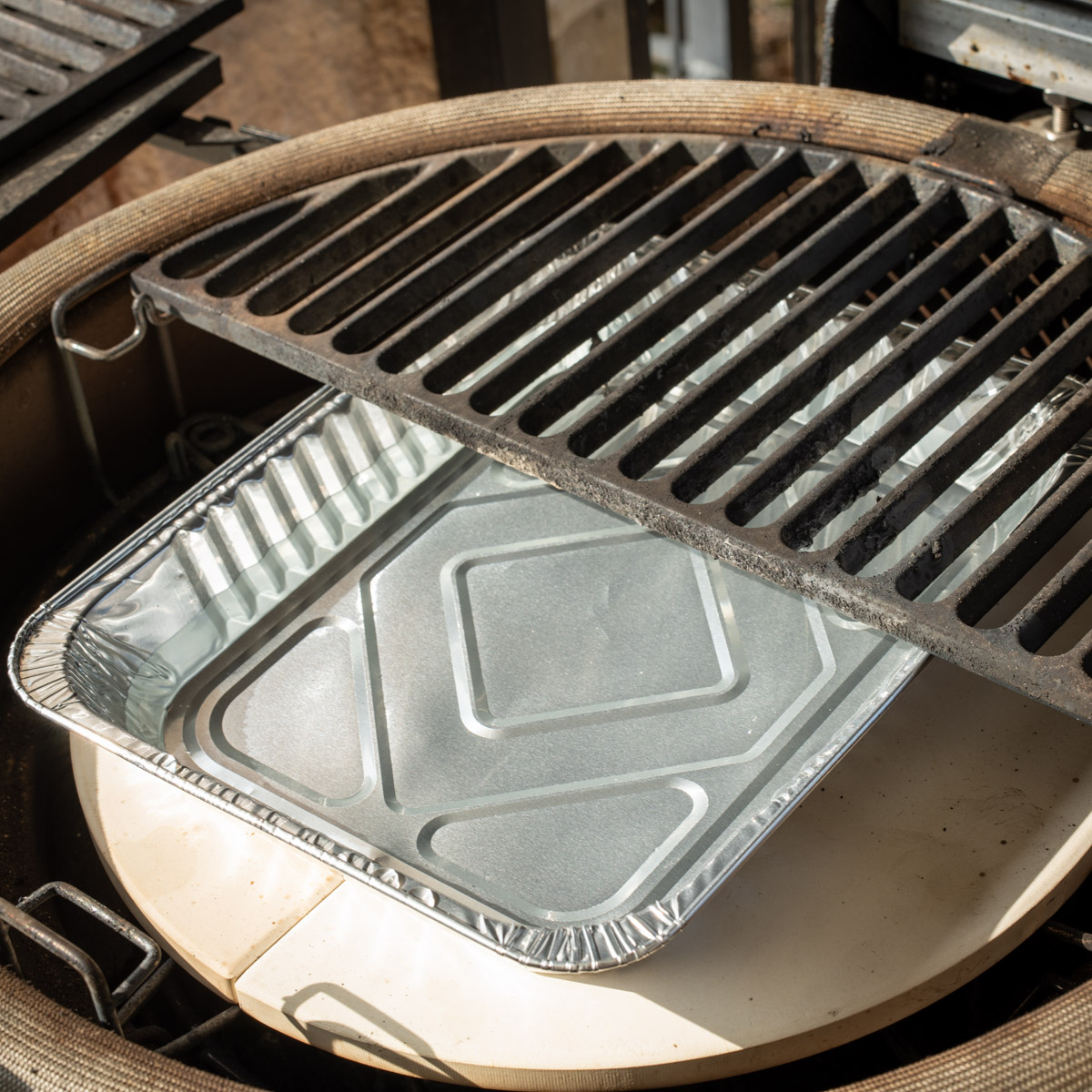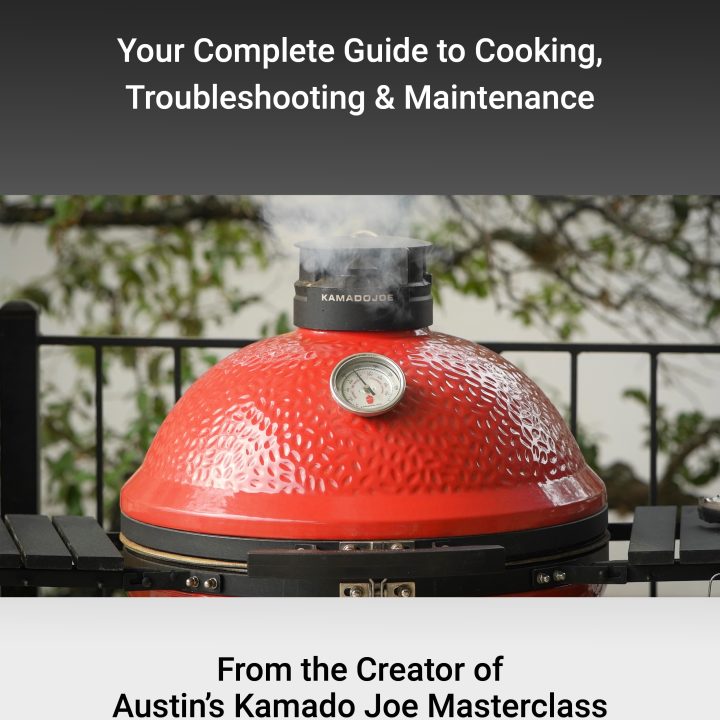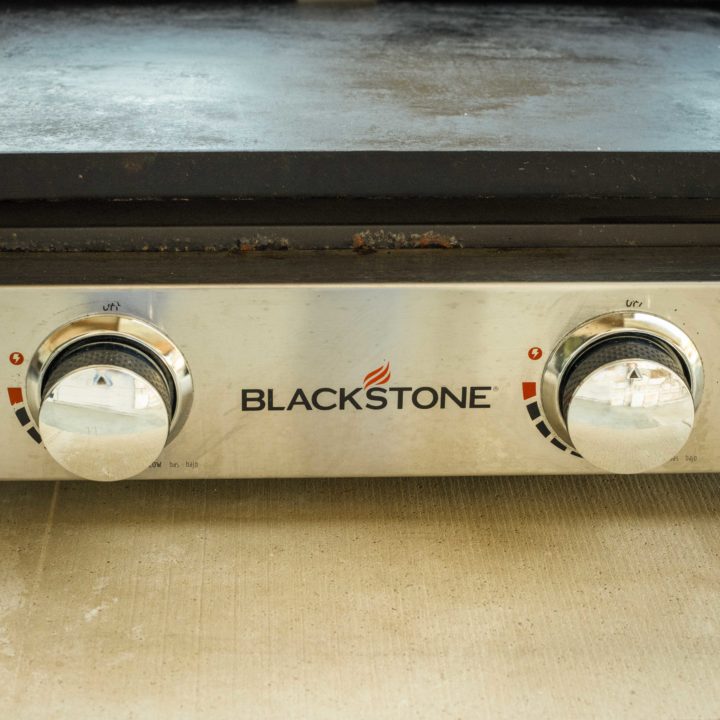In the world of barbecue, achieving the perfect balance of flavor and tenderness is something that every backyard pitmaster aspires to achieve. One of the barbecue secrets that seasoned pitmasters will tell you about is the importance of maintaining a humid environment inside the cooking chamber. Humidity slows down the cooking process, helps prevent meat from drying out and helps the meat absorb smoke. Whether you're smoking a pork shoulder, grilling baby back ribs, or you're on a quest for that perfect smoke ring, the presence of moisture can make a big difference in the quality of your barbecued meat.
A water pan is an often-overlooked barbecue tool that is essential to creating great barbecue. Placed strategically in the cooking chamber, a water pan plays a crucial role in distributing heat evenly throughout the cooking chamber and increasing humidity, allowing for more consistent cooking results. Whether you're using an offset smoker, electric smoker, pellet smoker, ceramic cooker or even a traditional charcoal smoker, understanding how to utilize a water pan effectively is essential for barbecue proficiency.
In this guide, we will discuss the importance of using water pans and their impact on temperature control, flavor infusion, moisture retention and more.

Jump to:
The Science Behind It
A water pan, also known as a drip pan or smoker water pan, is simply a pan filled with water or other liquid, and placed in the cooking chamber of your smoker or grill. It sits directly above or adjacent to the heat source, depending on the smoker, indirectly influencing the cooking process. It's often filled with a combination of water and flavorful liquids such as apple juice, apple cider or beer.
The primary function of a water pan is to create a humid environment in the cooking chamber. As the heat source causes the liquid in the pan to evaporate, water vapor mixes with the smoke particles, imparting a delicate flavor to the meat while keeping the surface of the meat moist throughout the cooking process. This process, known as evaporative cooling, helps to regulate temperature fluctuations and prevents the surface of the meat from drying out. This technique is particularly useful when smoking cuts like brisket, pork shoulder or baby back ribs, where connective tissues need a long cooking time at a low temperature to break down.
In his book, Franklin Barbecue - A Meat-Smoking Manifesto, renowned Austin, Texas pitmaster and author Aaron Franklin says, "You need a very humid environment, as it slows down the rate of moisture evaporation, collagen breakdown, and fat melt so that they all happen in concert." He also says that, "the humid environment helps preserve the moist, tacky surface of the meat, which is desirable to attract smoke."
Types of Water Pans
Water pans are available in various shapes, sizes and materials. A metal pan, made out of aluminum or stainless steel, can be cleaned and reused. These pans can last a long time but don't plan on putting an aluminum pan in the dishwasher because it will get ruined. These pans are difficult to clean by hand as they will get very dirty during the cooking process. They are not worth the effort.
Use disposable aluminum pans instead. These pans are lightweight, inexpensive, convenient, and don't need to be cleaned. It's easier to have a stock of disposable pans on hand and just throw them when away when done.
Benefits of Using a Water Pan
Let's take a look at some of the benefits of using a water pan for creating great barbecue.
Moisture Retention
One of the main reasons for using a water pan in barbecue cooking is its ability to help maintain a humid environment inside the smoker. As the water in the pan evaporates, it releases water vapor into the cooking chamber, creating a humid environment. This moist cooking environment helps keep the surface of the meat from drying out, resulting in juicier, more tender meat.
The moist environment created by the water pan is particularly important when cooking leaner cuts of meat, such as chicken or pork loin, which are prone to drying out during the cooking process.
Temperature Control and Stability
Another advantage of using a water pan is its ability to help maintain a steady temperature inside the cook chamber throughout the cooking process. This is particularly important for longer cooks, such as smoking a brisket, pork shoulder or 3-2-1 ribs, where fluctuations in temperature can affect the quality of the barbecued meat.
When water evaporates from the pan, it absorbs heat energy thereby cooling the cooking chamber. This is particularly crucial in offset smokers, where heat distribution can be uneven.
This evaporative cooling allows for lower, more consistent cooking temperatures which is essential for achieving consistent barbecue results.
However, if the heat is set too high, no amount of water vapor will help. A water pan can only do so much. It's important to understand how to control your smoker and strongly consider investing in a temperature control device like a Fireboard. For more information, take a look at my Fireboard video on why you need a device like this.
Prevention of Flare-Ups
The presence of a water pan can catch fat drippings and help prevent them from igniting and causing flare-ups. Of course, you should always smoke meat using indirect heat, which means you should already have a barrier between the hot coals and whatever you are cooking.
Creating Different Cooking Environments
Many barbecue enthusiasts maintain that they can create different cooking environments, depending upon their desired outcome, by adjusting the position of the water pan within the cooking chamber. For example, they believe that placing a water pan closer to the heat source can help create crispy skin when cooking chicken while still maintaining a moist cooking environment. Likewise, positioning the water pan further away from the heat source can promote smoke penetration and enhance the development of a smoke ring on meats.
I'm not sure this argument has much merit. If you are cooking in a Kamado Joe or Big Green Egg, there is one and only one place to put a water pan. That is on top of the diffuser and directly below the cooking grates. If you are cooking in a vertical smoker or electric smoker, the placement choices are also limited. The only time this would be an option would be if you were cooking in a pellet smoker or a traditional offset stick burner. Whenever I cook in my Yoder Cheyenne offset smoker, I always use a water pan inside the main cook chamber, directly on the cooking grates, set close to the firebox. Aaron Franklin always cooks in an offset smoker and always uses a water pan placed next to the firebox.
In Franklin Barbecue - A Meat-Smoking Manifesto, Aaron Franklin says that, "The depth of the smoke ring indicates how far the smoke has penetrated the meat before it contacts meat whose internal temperature has already risen enough to turn gray. Thus, it's logical that if you start with cold brisket - say, straight from the freezer - you can get a wider smoke ring, as the smoke can penetrate further before the interior of the meat heats up. And, surprise, that's a popular technique in competition barbecue to get that luscious-looking ring."
So, basically the water pan does nothing to help with the creation of a smoke ring. If you want your brisket to have a bigger smoke ring, don't let it come up to room temperature before smoking it. Take it out of the refrigerator and put it directly into the smoker.
Flavor Infusion
A lot of people maintain that adding flavored liquids like apple juice or other fruit juices to the water pan imparts subtle added flavors into the meat. The theory is that these ingredients vaporize in the cooking chamber, then mingle with the smoke particles, imparting layers of complexity and depth to the meat. Well, I'm not sold. I have smoked a lot of different meats and have tried all kinds of combinations of liquids and I don't think the liquid that I chose added anything to the flavor of the meat. However, my go-to is a mixture of about 50% cold water, 40% apple juice or apple cider, and 10% (or 10 ounces) of cold beer. Why 10 ounces? Because I drink the first two then pour the remaining 10 into the water pan.
How to Use a Water Pan
Using a water pan is simple. Place a clean water pan in the cooking chamber, either directly above the heat source for indirect cooking environments or adjacent to it for offset smokers. Then fill it with clean, cold water or your preferred liquid, ensuring that the level is sufficient to last throughout the smoking process. It can be difficult to add water during the cooking process if the water pan is directly below the cooking grates.
Still, make sure to monitor the water level periodically and refill as needed to maintain a moist environment. You don't want the pan to run dry. If the water in the pan boils out, the temperature inside the smoke chamber will go up and the moisture will be lost. Monitor the water level regularly, topping it up as needed to maintain a steady supply of water vapor.
The initial water temperature doesn't really matter. There is no point in filling the pan with hot water, it will become hot soon enough.
Tips for Success
Place an empty water pan in your smoker immediately after setting it up for indirect heat. Don't wait for the smoker to come up to temperature first as that will just make the process more difficult. Then, use a pitcher to carefully fill the pan about 75% full. This is much easier than trying to place a pan full of liquid into a smoker. It can tilt to one side or another, then spill out and ruin the charcoal. It's a mess that I know about first hand.
Final Thoughts
Whether you're a seasoned barbecue veteran or just starting on your culinary barbecue journey, incorporating water pans into your cooking routine can help you achieve professional-level results in your own backyard. By creating a moist, indirect cooking environment, a water pan ensures that your meat stays tender, juicy, and full of flavor. The next time you fire up your grill or smoker, don't forget to fill that trusty water pan-it's the secret ingredient to barbecue perfection.
Check out my other BBQ posts on and How to Smoke a Brisket on a Charcoal Grill, How Long to Cook a 15 Pound Brisket for Best Results, How to Know When a Brisket is Done and Will Pink Butcher Paper Burn in a Smoker?





Leave a Reply